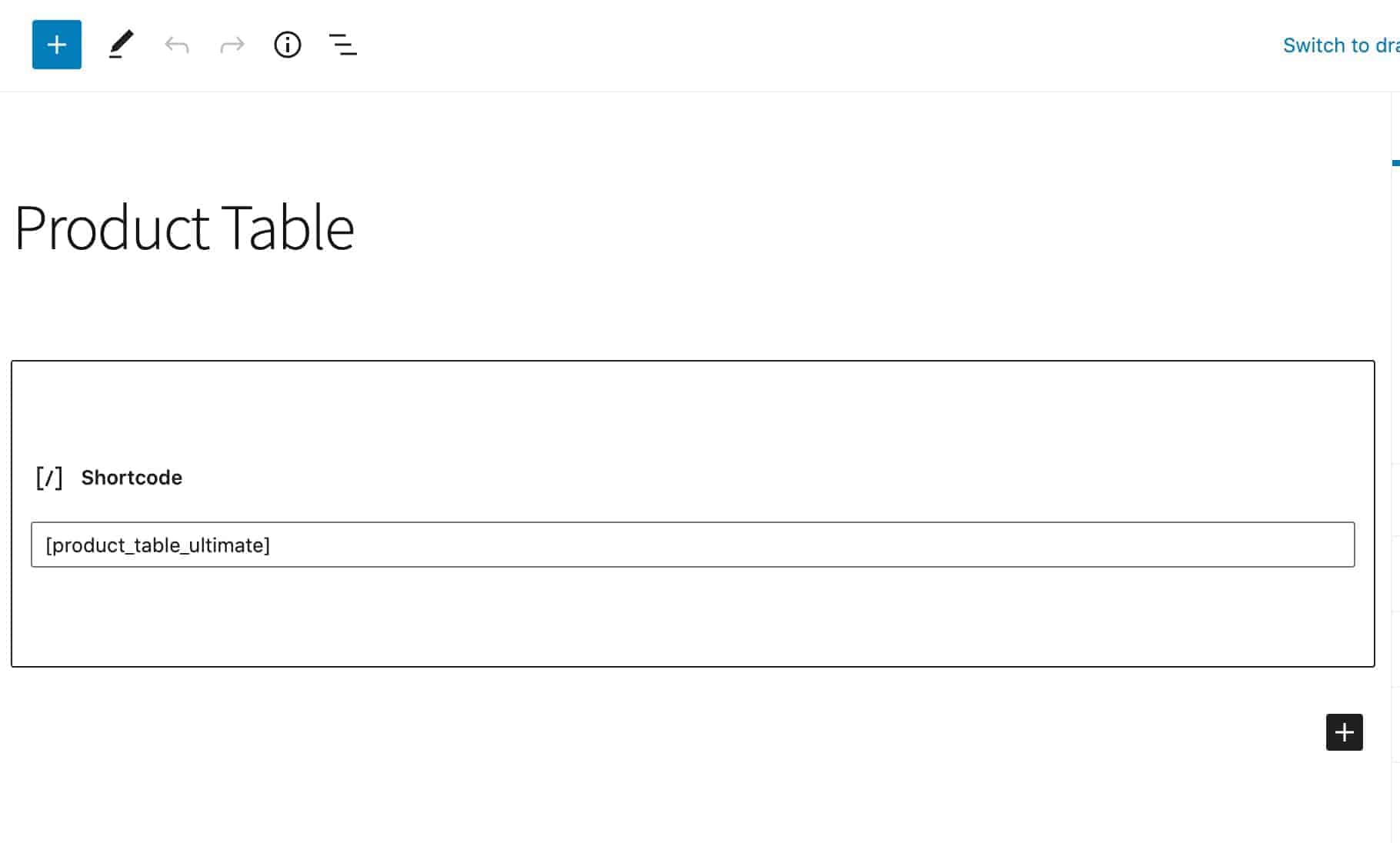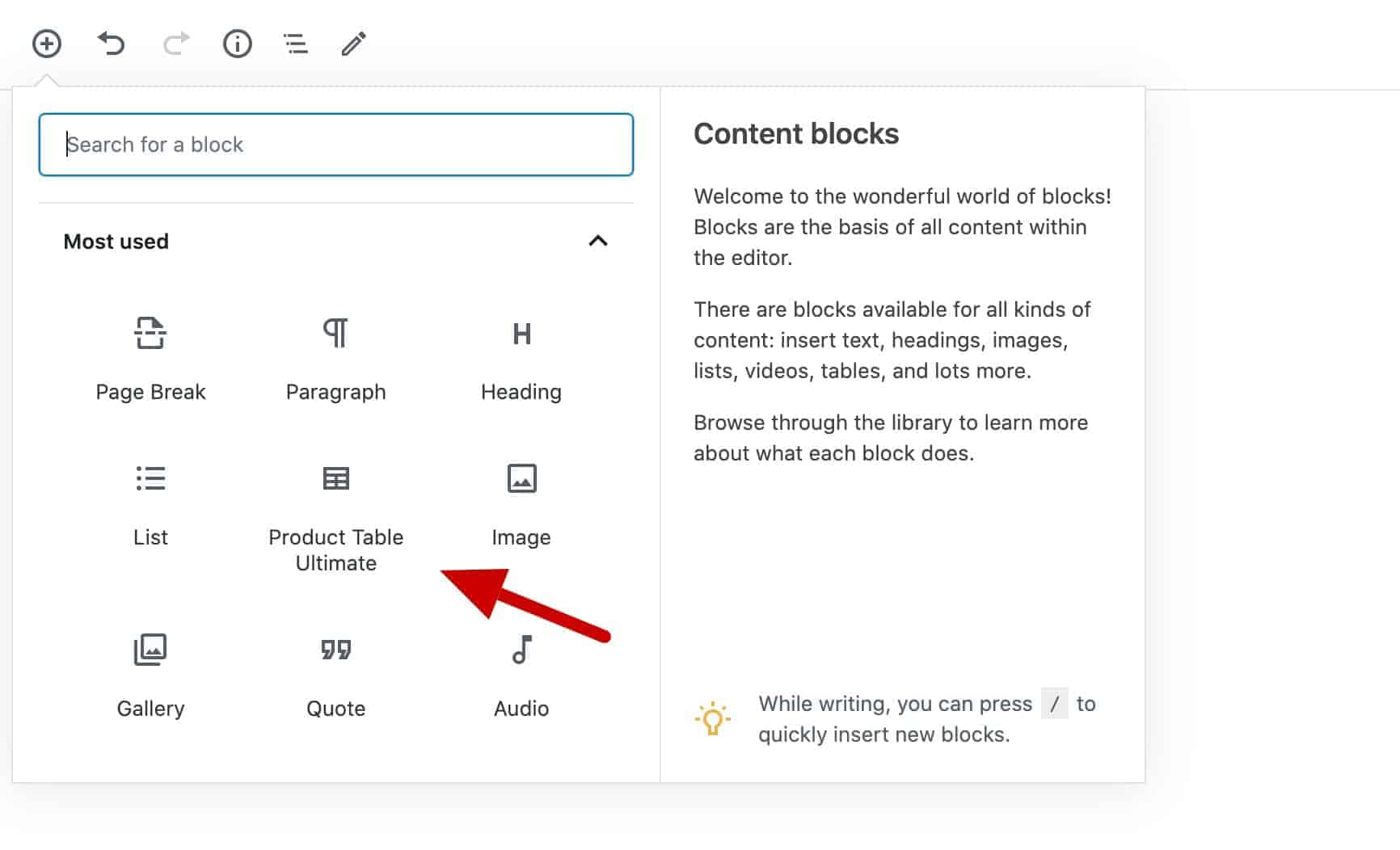You can display a product table by using a shortcode or Gutenberg block.
Displaying a product table using a shortcode
Go to the page where you’d like to display the product and enter the following shortcode:
[product_table_ultimate]

Publish or update your page. This will now display a product table to your users.
When you enter the basic shortcode like this, the plugin will use the settings you define at WooCommerce > Settings > Product Table. Click here to find out more about these settings.
Shortcode parameters
You can fine-tune your product using different shortcode parameters. Here’s a list of the available parameters and some examples of how to use them.
columns– this parameter defines what columns will be displayed in your table. Choose from “sku, thumbnail, name, short-description, stock, attributes, categories, tags, price, add-to-cart”. Separate each option with a comma.source– define which products to display. Options include “all”, “categories”, “tags”, “taxonomies”, “callback”callback– if you choose “callback” in the “source” parameter, enter the name of your custom querycategories– if you choose “categories” in “source” then add a new parameter listing the IDs of the categories you want to display, e.g.categories="23,25"taxonomies– if you choose “taxonomies” in “source” then add a new parameter listing the IDs of the taxonomies you want to display, e.g.taxonomies="23,25"tags– if you choose “tags” in “source” then add a new parameter listing the IDs of the tags you want to display, e.g.tags="23,25"order_by– define how to order the products in the table. Choose from “id”, “sku”, “title”, “price”, “date”, “popularity”, “rating”, “menu_order”order– either “ASC” or “DESC”per_page– how many products to list per pageshow_quantities– either “yes” or “no”variations_display– if you have variations in your table, you can choose how to display them. Either “none”, “row”, “parent”add_selected– either “yes” or “no” to show a checkbox against each product, allowing users to select multiple products at the same time
There’s further information on each of these settings here.
Displaying a product table using the block editor
To add your table, just click the ‘New Block’ icon and search for the ‘Product Table Ultimate’ block.

By default, the table will follow the default settings. However, you can override these from the block settings.
